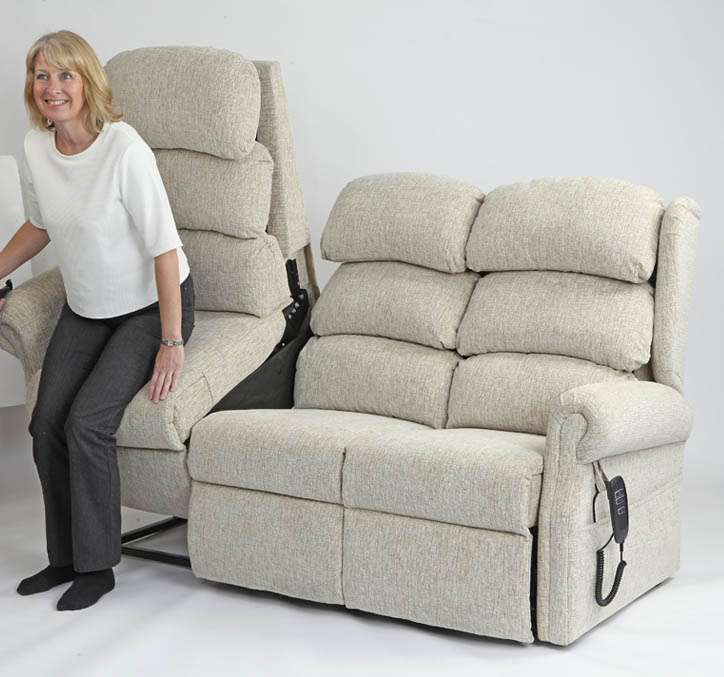Whether a customer reaches out to us online or they are more local and visit our showroom, one thing is certain…comfort is at front of their mind.
This is because an orthopaedic riser recliner chair is usually needed when a person doesn’t have the same mobility that they used to and rely more on the mobility equipment to help them with daily tasks.
The process of choosing an orthopaedic recliner chair for a person with low mobility could be difficult, especially if you don’t know where to start.
In this article, we will discuss features that can help make a rise and recline chair more comfortable, accessible and increase safety for the person sitting.
There are several comfort features to consider, so consider this guide a starting point for your orthopaedic riser recliner chair search.
Recliners as a Standing Aid:
Apart from offering great comfort, rise and recline chairs can also serve as valuable standing aids, especially for individuals with limited mobility. These chairs are equipped with features that assist users in transitioning from a seated to a standing position safely and with ease.
The design typically includes a motorised mechanism that gently tilts the chair forward, helping the user to stand without putting excessive strain on their muscles or joints.
This is particularly beneficial for the elderly or reduced mobility people recovering from injuries, as it reduces the risk of falls and minimises the effort required to stand up.
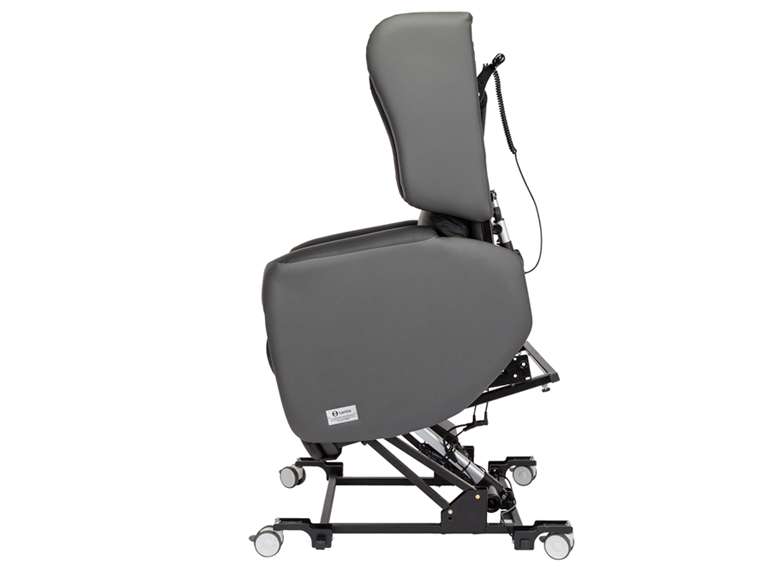
The Lento electric lift up chair feature makes it easier for a person to get in and out of the chair
Moreover, these recliners often have supportive armrests and handles that provide additional stability during the standing process. The cushioning and ergonomic design of these chairs offer comfort while standing or sitting.
By repurposing recliner chairs as standing aids, a person can maintain greater independence and confidently go about the day to day life, promoting both physical well-being and peace of mind.
Single and Dual Motor Options
One of the first things to consider when choosing an orthopaedic recliner chair is whether to go for a single motor or a dual motor option.
- A single motor recliner operates using one motor that controls both the backrest and the footrest.
- A dual motor recliner, on the other hand, operates using two separate motors that control the backrest and footrest independently.
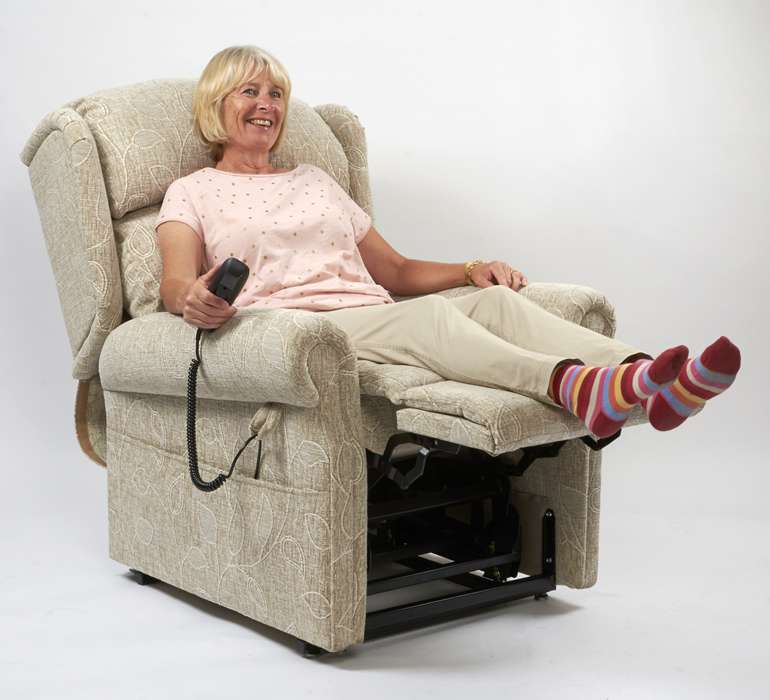
What is a Dual Motor Recliner?
A dual motor recliner is a type of orthopaedic recliner chair that allows the user to control the backrest and footrest independently.
This means that the person sitting in the chair can adjust it to their ideal position, whether that be sitting upright or laying flat.
The two motors also allow for more precise adjustments, so the user can find the perfect angle for their needs.
Why Choose a Dual Motor Recliner Over a Single Motor Recliner?
While a single motor recliner is less expensive than a dual motor recliner, there are several benefits to choosing a dual motor option.
With a dual motor recliner, the person sitting in the chair has more control over the positioning of the chair, which can help provide better support and comfort.
The independent motors also allow for more precise adjustments, which can be particularly helpful for those with specific mobility needs.
Static Recliner Chair vs. Recliner Chair on Wheels
Another factor to consider when choosing an orthopaedic recliner chair is whether to go for a static recliner chair or a recliner chair on wheels.
A static recliner chair is designed to stay in one place, while a recliner chair on wheels can be moved around the room.
Benefits of a Static Recliner Chair
A static recliner chair is a good option for those who need a lot of support and stability.
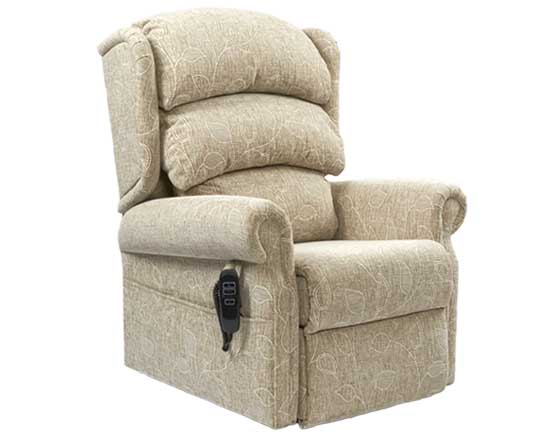
Our static electric recliners are a favourite among people who don’t feel they need medical recliner chairs at home.
With a static chair, the user can feel confident that the chair won’t move or tip over while they are sitting in it.
Static chairs are also usually less expensive than wheeled recliner chairs, which can be a factor for some users.
Benefits of a Recliner Chair on Wheels
A recliner chair on wheels can be a good option for those who need more flexibility and mobility.
With a chair on wheels, the user can easily move the chair from room to room, which can be helpful if they need to change rooms frequently or if they want to be able to sit in different areas of the room.
Recliner chairs on wheels are also usually easier to clean than static chairs, as they can be moved out of the way for cleaning.
Backrest Types
Orthopaedic recliners have several different types of backrests available.
Some chairs have a fixed backrest, while others have a split backrest that provides more flexibility. Some chairs also have a waterfall backrest that provides more support to the lower back.
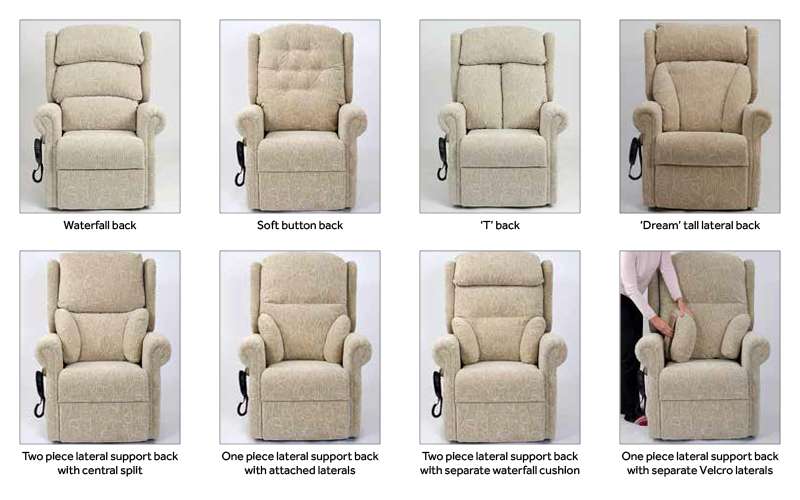
When choosing a backrest type, it’s essential to consider the elderly person’s comfort and support needs. A fixed backrest provides stability, while a split backrest provides flexibility.
What’s the Best Recliner Backrest for Back Pain?
An orthopaedic recliner with a waterfall backrest provides more support to the lower back, which is essential for people with back problems.
What About Pressure Sore/Ulcer Care?
Low mobility elderly people are at risk of developing pressure sores and ulcers due to prolonged sitting. Therefore, it’s essential to choose a rise and recline chair that provides pressure relief and promotes blood circulation.
Some recliners come with Visco foam cushions that conform to the body’s shape, reducing pressure points.
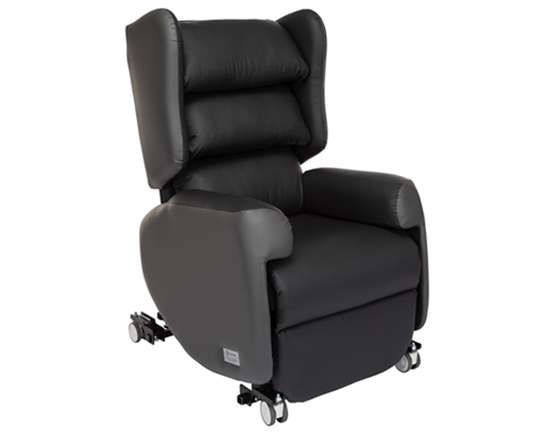
All recliner and care chairs in the Lento range feature a Visco foam pressure relief cushion as standard. This can be removed and upgraded to offer a higher level of pressure injury care.
Others have airflow cushions that alternate pressure to prevent pressure sores. Proper pressure relief is vital for people with low mobility, and it’s essential to choose a recliner chair that provides adequate pressure relief.
All our orthopaedic and medical recliners can be fitted with ANY of the below cushions.
- Visco Foam: Included as standard on all of our Lento chairs
- Gel Cushion: A pressure relieving gel is used inside the cushions
- Alternating Airflow – This for people at the highest risk of developing pressure sores/ulcers. Spending VERY long periods sitting down with little movement
Summary:
In summary, you need careful consideration of a few comfort features and a few postural best practices when choosing an orthopaedic recliner chair for a low mobility person. Getting these right will greatly improve the experience of whoever is going to be using the chair.
- How many motors do you want?
- Static or wheeled recliner chair?
- What backrest types are ideal for your needs?
- Whet pressure sore/ulcer management options are available?
The choice between a single motor and dual motor recliner, as well as between a static recliner chair and a recliner chair on wheels, will depend hugely on the user’s specific needs and preferences.
By taking the time to choose the right orthopaedic recliner, you can help ensure that the elderly person in your life is comfortable and well-supported.





